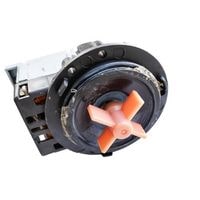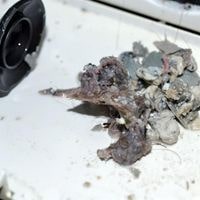Kenmore washer won’t drain. You just finished washing a week’s worth of clothes, and now you put the laundry in your Kenmore washer to finish its cycle.
You decide to leave the room for a few minutes and come back, only to find that it won’t drain properly. Luckily, there are some troubleshooting steps you can do before calling a plumber.
If your Kenmore washer is having trouble draining, there is likely a clog in the drain pump or it is damaged, thus preventing proper drainage.
Kenmore washer won’t drain
If the Kenmore washer will not drain or is not draining properly, and it has a coin trap, remove the coin trap and clean it thoroughly.
First, check the drain hose to find out if it is kinked, twisted or bent. Next, remove the drain hose and see if there is anything obstructing its path.
In the following sections, we will discuss more ways to troubleshoot your Kenmore washer that does not drain.
Drain your washing machine manually
As mentioned earlier, the very first step you need to take to drain water from a washing machine is to force the appliance to expel dirty water by either unplugging the appliance or forcibly resetting it via switches placed within.
Regardless of which strategy you decide to employ, I strongly discourage attempting these tricks as an alternative to seeking professional washer repair service and replacement parts because they will only provide short-term relief.
Cleaning the water level valve
If the above tricks don’t work, it means you might have to inspect your water level system. You can start by removing the flap covering your toilet’s control panel and locating the water level regulator.
You’ll see a small plastic tube attached to it, and if you see muck, grime, or mold buildup, you could consider using some vinegar and baking soda to clear the tube.
However, sometimes an old rusting regulator will put up a fight, so it might be worth considering replacing that component altogether if the solution doesn’t appear to resolve any issues.
Faulty Drain Pump
Defective door lock motor and switch assembly
The door lock ensures that the door is closed when the washer is being operated. When the door lock is locked, it allows the washer to start or continue operating.
Once you’ve switched on your washer, for example, the next step is to close its door – and if the door does not shut properly or latch with the lock, this often means there’s a problem with both how it shuts and how well it has been engineered.
After which, it can affect how well your appliance actually performs. This is why you should make sure you check both how tightly it latches as well as make sure that there are no signs of electrical damage (which could be as simple as a loose wire, for example).
Otherwise, be prepared for things like not getting enough lift on your clothes or not getting them clean if, in fact, this does happen.
Verify the coin trap
Some washers are equipped with a coin trap. This coin trap is designed to remove any coins or other small particles that may have been thrown into the washing machine accidentally.
It’s important that this coin trap be checked periodically to ensure it’s not blocked.
A coin trap gets blocked when there are too many materials present in it and must be checked every few loads so as to keep it as clear as possible to prevent any sort of clogging from occurring.
If the washer won’t drain properly or if it isn’t draining at all, and the washer has a coin trap, you will want to remove the coin trap and clean it thoroughly until your next use.
Problem with the door lock
Check the pegs at the bottom of the door that protrudes into a channel in the strike. If they are cracked, chipped, or broken off, replace the strike. This strike is not restorable and must be replaced if it is broken.
Problem with the drain hose
First, check the drain hose to determine if it has any kinks or twists. If it does, try to make sure that the path isn’t obstructed with anything such as using a wire hanger and sliding it inside.
If still, nothing comes out after trying to clear out any obstruction from within your hose, you should probably go ahead and replace it altogether.
Related Guides
